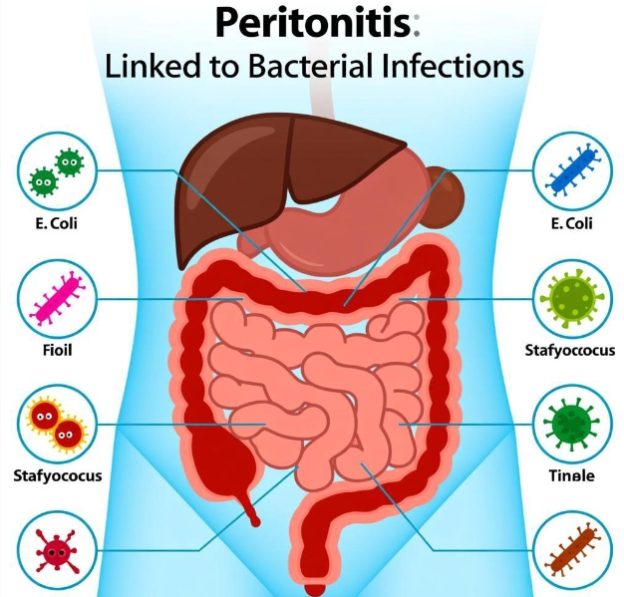Peritonitis is an acute inflammation of the peritoneum triggered by bacterial, chemical or physical insults. It progresses rapidly and may become life-threatening within hours. Key manifestations include:
- Abdominal pain
The earliest and most prominent symptom—persistent, sharp, and diffuse; movement, coughing or palpation intensifies the discomfort. - Peritoneal signs
Tenderness, rebound pain and guarding give the abdomen a board-like rigidity, reflecting parietal peritoneal irritation. - Nausea & vomiting
Initially reflex, later bilious or feculent if paralytic ileus supervenes. - Fever & rigors
Temperature often >38 °C with chills as systemic inflammation ignites. - Abdominal distension
Gas and fluid accumulate when peristalsis ceases, sometimes compromising respiration. - Cessation of flatus & stool
Absent bowel sounds confirm adynamic ileus. - Dehydration & thirst
Fluid loss from vomiting, third-spacing and fever produces dry mucosa and oliguria. - Systemic toxicity & shock
Endotoxaemia may lead to septic shock: pallor, cold clammy extremities, tachycardia, hypotension, confusion, culminating in multi-organ failure. - Dialysis-fluid changes (in CAPD patients)
Cloudy effluent with fibrin flecks or strands and catheter-site erythema.
Because fulminant deterioration is common, any patient with sudden severe abdominal pain plus fever, guarding or haemodynamic instability requires immediate evaluation and empiric therapy.
| Key Aspect | Typical Findings |
|---|---|
| Pain onset | Sudden, severe, continuous, worsened by motion |
| Physical signs | Tenderness, rebound, board-like rigidity |
| GI function | Nausea, vomiting, absent flatus/stool, silent abdomen |
| Temperature | ≥38 °C, often with chills |
| Circulatory | Tachycardia, hypotension → septic shock |
| Respiratory | Shallow breathing due to pain/diaphragmatic splinting |
| Urinary output | Oliguria from hypovolaemia or sepsis |
| Emergency marker | Combination of acute abdomen + fever/shock mandates urgent laparotomy/IV antibiotics |

